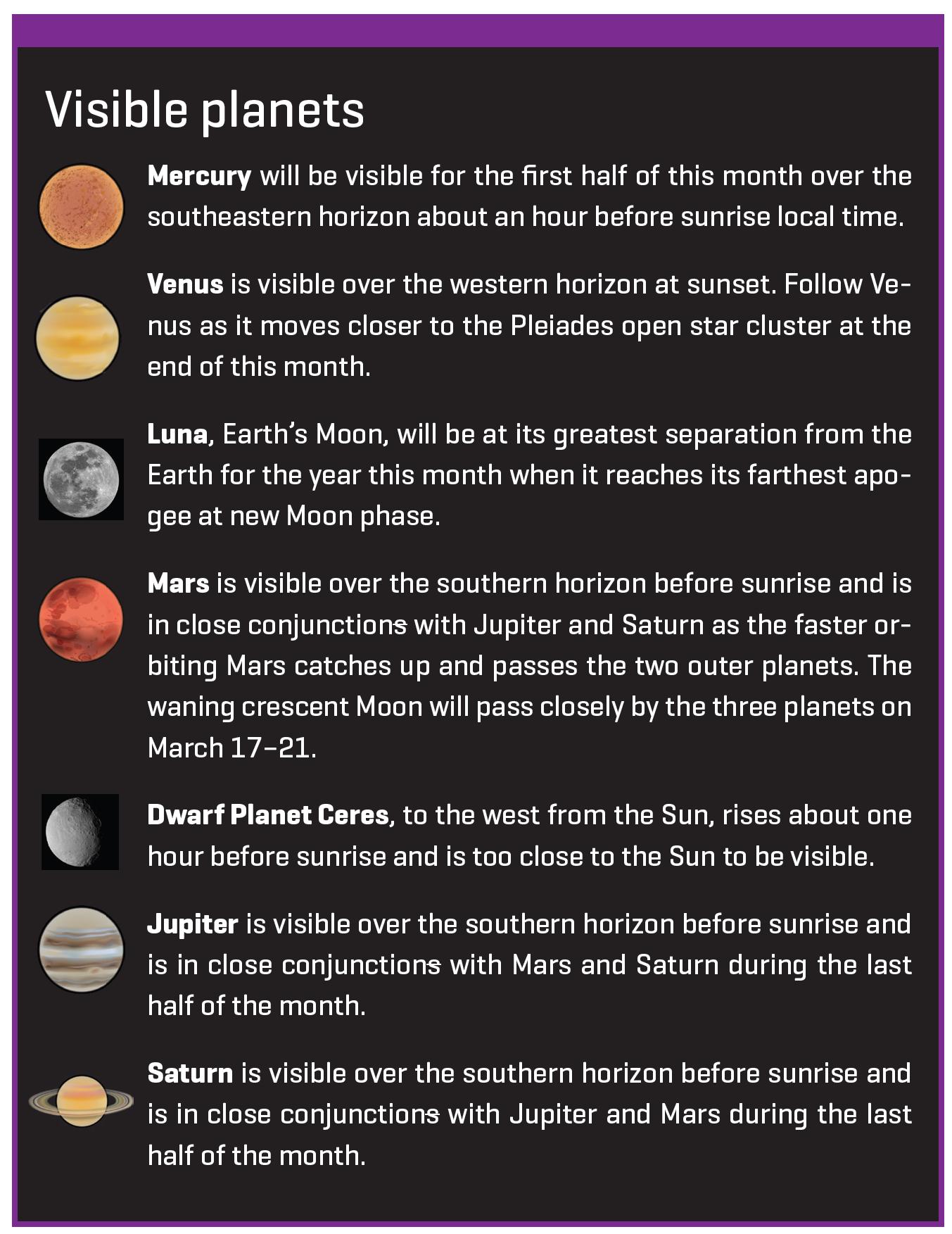Scope on the Skies
Spring Migrations
San Juan Capistrano
In some places springtime means returning swallows and the ringing of the Mission San Juan Capistrano bells. This popular tradition celebrates the return of cliff swallows as they migrate north from their winter home in Argentina to their spring and summer home in southern California. (See Resources for lesson ideas.) The swallows’ return typically occurs in mid-March. Their return is a festive event that celebrates the sighting of the first swallow with the ringing of the mission bells and other local traditions, which date to the early years of the mission when the padres observed that the swallows routinely returned around St. Joseph’s Day, March 19 (see Figure 2).

Barn swallows
While the return of the swallows is eagerly anticipated, some eyes may be watching for more than the return of birds. Late in the evening of March 15, 1973, a small meteorite smashed through the aluminum roof of a carport in San Juan Capistrano. This meteorite was named the San Juan Meteorite (see Resources). It was seen falling, but it was quickly recovered and put in the hands of scientists at the University of Southern California, San Diego, who identified it as a chondrite, one of three categories based on a meteorite’s composition. Meteorites are fragments of rocky material that originally were part of an asteroid. These meteorites are important in that they are relatively pristine remnants of the early stages of the formation of our solar system.
March
| March | ||||||||||||||||||||||||||
|---|---|---|---|---|---|---|---|---|---|---|---|---|---|---|---|---|---|---|---|---|---|---|---|---|---|---|
|
- Download the SFA Star Charts, print out the two-part equatorial charts, and tape the ends together. Follow the planets, the Sun, and Earth’s Moon as you plot the positions of planets, the Sun, and Moon using coordinate data from the In the Sky website (see Resources).
- Develop a “city-size” scale model of the solar system using either the app or website in Resources for calculating the scale sizes (see Resources).
- This month most of the United States will set their clocks forward one hour for Daylight Saving Time. What explanation could you suggest for why not all the states in the U.S.A. make this time adjustment?
- Using the meridians of longitude, the Earth is divided into 24 equal segments, 15 degrees apart. These meridians also define 24 time zones, each separated by one hour. However, there are more than 24 time zones. How many more are there and what would explain why these may be necessary? (See Resources.)
Road trip extension
A great extension is to plan a road trip (during a school break) between the student home or school and a distant location. Some planning could be done online using a state’s “Visit us” website to learn more about that state’s features and attractions. Students use a state or regional paper highway map to plot out the route and stops along the way. They then describe in detail what they see on the trip. In an Earth science class, for example, they can be encouraged to look for geological and geographical features. To get a printed state highway map, write to each state’s tourism board (see Resources).
An extension to the above activity is planning a road trip with descriptions of geological and geographical features on the planet Mars. Students would use the latitude and longitude coordinates they obtained for their “Earth-based” road trip, but this time would use them on Mars (see Resources). This requires either having a Mars surface map showing latitude and longitude (see Resources) or online access to Google Mars or online programs with maps of Mars and explanations of surface features.

Bob Riddle (bob-riddle@currentsky.com) is a science educator in Lee’s Summit, Missouri. Visit his astronomy website at www.bobs-spaces.net.
Astronomy Earth & Space Science Life Science Middle School



